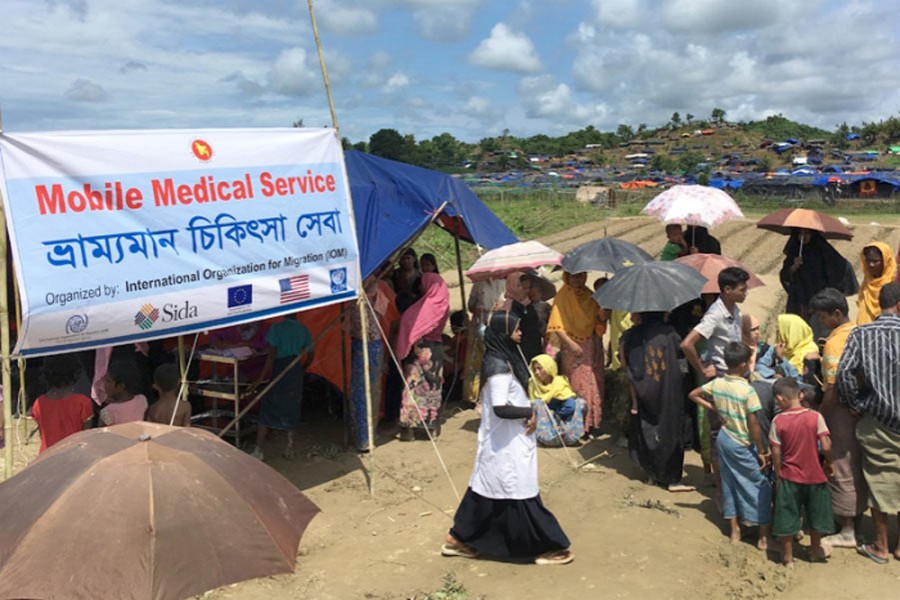Doctors' preference for major cities, particularly Dhaka, in avoidance of service at district and upazila health facilities even by dodging government rules has been a problem for long. In fact, this appears to largely characterise the country's healthcare system for decades. Successive governments have only recognised it as a major drawback requiring attention, though hardly ever attempting to address it in a meaningful manner. No doubt, this poses a major challenge for equitable distribution and delivery of healthcare services in the country. More importantly -- and sadly - it makes access to medicare a hopelessly distant dream for the vast majority of the masses living in rural areas.
At a dialogue recently organised by the International Centre for Diarrhoeal Disease Research, Bangladesh (icddr,b) on 'Equitable Distribution of Medical Doctors for Strengthening Universal Health Coverage', some shocking facts emerged from a study that brings to light the extremely asymmetrical state of healthcare services in the country. The study shows that a total of 4,749 physicians are currently posted in Dhaka against only 783 sanctioned posts, causing a serious dearth of doctors at district level and below. Currently, Dhaka division has 42.2 per cent surplus doctors or 2,514 more doctors than the sanctioned 5,956 posts, it says. On the other hand, on an average more than 50 per cent posts are presently vacant in Barishal, Rangpur, Khulna, Sylhet, Rajshahi, Chattogram and Mymensingh division.
Retention of doctors in their places of posting in small towns and rural areas is a problem in many developing countries. In Bangladesh, in most cases it is the pressure from powerful quarters including from political high-ups in favour of the incumbent doctors reluctant to go to rural areas that has resulted in the present state of overcrowding in Dhaka and other big cities. At present, the country has only 1.1 doctors per 10, 000 population in rural areas, compared to 18.2 per 10, 000 in urban areas. According to a World Health Organisation (WHO) report, 35 per cent of doctors and 30 per cent of the nurses serve 15 per cent of the total population living in four major cities of Bangladesh-- Dhaka, Chottogram, Rajshahi, and Khulna, whereas less than 20 per cent of health workers are available for more than 70 per cent people living in rural areas.
With considerable development taking place in districts and upazilas all over the country, unwillingness to stay there for at least a tenure of say, four years makes a shocking case for any professional group, let alone for doctors who are oath-bound to serve humanity. Observers, however, point to the lack of career prospect as a genuine issue. In the absence of promotion prospect, an MBBS doctor has virtually no opening up the career ladder unless he/she goes for higher education to obtain a degree or a diploma or at the very least a specialised training course. This motivates many to seek attachment in hospitals in big cities. Observers opine that if the government makes services of doctors at the outlying health facilities conditional to seeking higher education, absenteeism of doctors in those facilities could be contained to a large extent. This will likely make a strong case for doctors to serve in those facilities at least for the period required. The Director General of Health Services (DGHS) should come up with more such moves that would serve the interest of doctors as well as that of the masses missing out on government's healthcare services.


